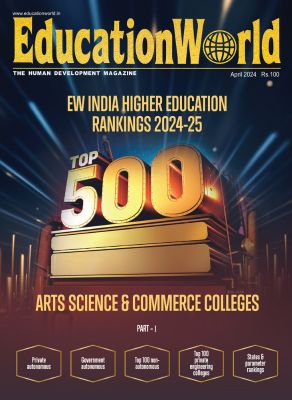
Technology, design, and social sciences. Completely different areas, are they?
In 2015, the United Nations declared sustainable transformation as the most critical global agenda till 2030. While developing the 17 Sustainable Development Goals—or SDGs as they are usually referred to—it was acutely felt by the experts that converging technology, design and social sciences was essential to achieve the tasks outlined in the SDGs. While an acute shortage of professionals educated and skilled with these three seemingly disparate sets of knowledge is recognised, what kind of academic programmes can possibly merge these three areas is unclear – particularly in India – where interdisciplinary courses are conspicuously absent at the undergraduate level. Catering to future SDG needs will be impossible with the conventional subjects taught across Indian universities.
An examination of the agenda of sustainable transformation reveals that it concerns transforming spaces and places. Studying the built environment becomes critical for such a pursuit. To better understand the questions surrounding the built environment, it is imperative that future professionals study technology, design and social sciences together. To meet this need, O.P. Jindal Global University (JGU) established the Jindal School of Art & Architecture, JSAA, in 2018. JSAA now offers a Bachelor of Architecture degree and two Bachelor of Design degrees, one in Interior Design and another in Community & Urban Development. Across all three programmes, students are trained to tackle real-world challenges from a theoretically robust and pragmatically nuanced pedagogy that equips them to produce effective and equitable solutions.
At JSAA, the approach is to define the built environment very differently from its conventional understanding. Education at JSAA starts with the assertion that every environment is ‘built’, whether by humans or nonhumans alone or jointly, facilitated by active geophysical processes. All three are active agents in producing any environment. There is enough evidence with scientists now to recognise that a forest is as much a built environment as an igloo. While the former is ‘built’ through the interactions of humans, nonhumans and the geophysical processes, the latter is ‘built’ by the Inuit community with the help of natural processes. Nothing is ‘pristine,’ everything has been ’built,’ not only insofar as human civilisations go back to, but even before that. Even dinosaurs were active agents in creating and building the environment they lived in.
This understanding of the built environment is the central principle and core ideal that JSAA works with, following the latest and best practices from across the world. This necessarily means having faculty members educated at the very best universities around the world with advanced interdisciplinary education and training. JSAA’s accomplished and well-trained faculty includes not only architects, but anthropologists, geographers, historians, lawyers, designers, engineers, and conservationists with academic training and professional experience in the best global universities such as Cornell, Purdue, UCLA, Connecticut, UC Berkeley, Heidelberg, Politecnico de Milano, to name a few.
JSAA offers research-based and hands-on education. The spirit of pedagogical engagement at JSAA is not hierarchical but leans towards co-producing knowledge where students are equal stakeholders in creating a curriculum that best suits them, rather than following a static, pre-determined curriculum. Those who wish to focus on technical skills can do so, whilst those with more interest in the social sciences can learn how to use these insights to deconstruct complex global problems. Students can opt for a dual degree with a minor from other 11 schools within JGU – be it legal studies, management, media studies, international relations, or a host of other subjects.
Students at JSAA are encouraged to think critically and develop their own ideas. They participate in faculty-driven research and gain first-hand experience in the construction of knowledge. Not restricted to conventional classroom-based teaching and simulations, students at JSAA conduct fieldwork, work on live projects and interact with actual clients. JSAA is the first school in India to start an international undergraduate research conference focused on the built environment, organised and managed by students. The first edition in 2021 received an overwhelming response from across the globe. The second edition is scheduled for September this year.
JSAA encourages students to explore and connect seemingly unrelated issues. They relate road designs with accidents, flyovers with crime rates, declining sex ratio with land ownerships and real estate with public health. They learn how design is a function of gender identity and how patriarchy has historically determined design. They ask questions such as: were the humans who discovered fire more ‘modern’ or those designing and making iPhones. With such intellectually exhaustive and professionally focused training, these students will become a critical workforce, becoming tomorrow’s designers, planners, architects, urbanists, gamers, project managers, infrastructure experts, development professionals, social marketers, educationists, social workers, media professionals. Working in the best of institutions and organisations globally. Ready to confront the challenge and transforming spaces, places, systems, environments, societies around us sustainably.
Also Read:OP Jindal Global University: Rising star of India’s most International University


























